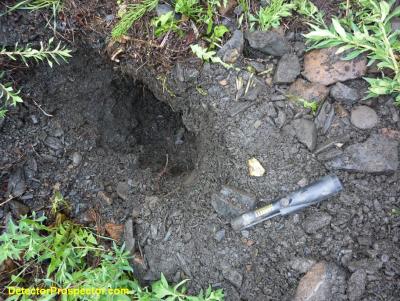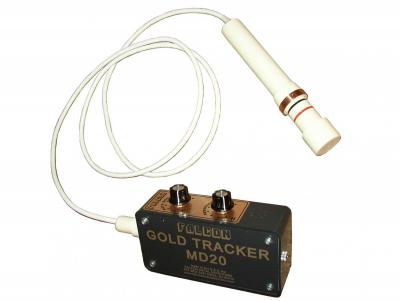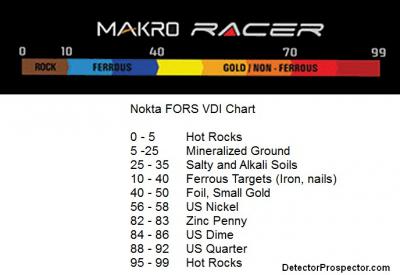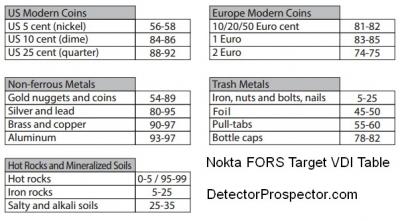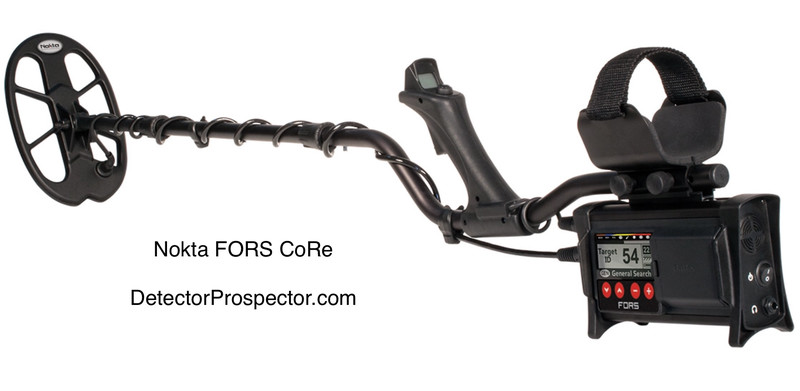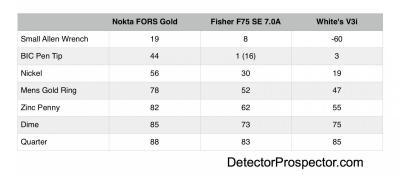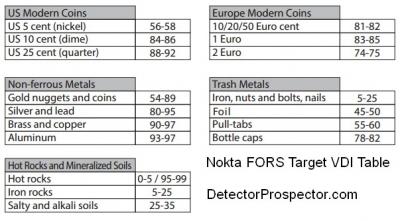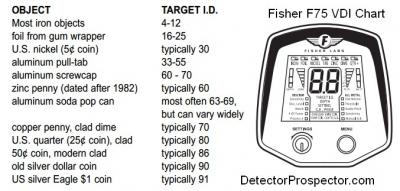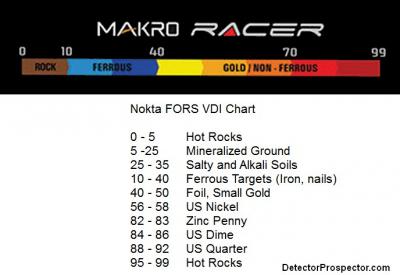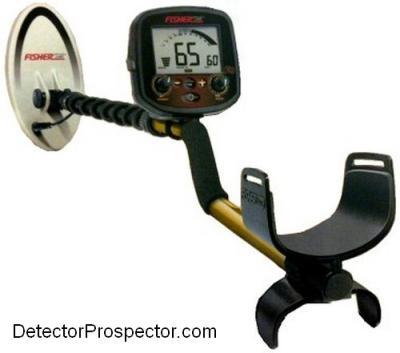-
Posts
19,794 -
Joined
Content Type
Forums
Detector Prospector Home
Detector Database
Downloads
Everything posted by Steve Herschbach
-

Do You Leach?
Steve Herschbach replied to Mike Hillis's topic in Gold Panning, Sluicing, Dredging, Drywashing, Etc
Chris Ralph is an expert in the subject as he used to run a leaching operation on a commercial scale. We have discussed the potential here in Nevada. Never done it myself. I added a none option to the poll. -
I very much agree Mike. I am pretty sure I said just that but I guess I did not communicate it properly. My goal is simply to warn people that detector A getting an extra inch over detector B in an air test does not mean that is how it is going to work in the ground. And yet a great many people imply just that with air tests.
-

Found Bracelet - Gold or Brass or......?
Steve Herschbach replied to tvanwho's topic in Metal Detecting For Jewelry
So Tom, how did that bracelet turn out? -

Red Dirt and Desert Gold?
Steve Herschbach replied to tvanwho's topic in Rocks, Minerals, Gems & Geology
Iron occurs in way more places than gold. Way more places. Just because iron was mined someplace says nothing to me about there possibly being gold there. I would caution you against underestimating what the last 100 years of prospectors have already done. But yeah, if I have the time I will hunt a place just because it looks good. The time thing being the limiting factor. -

Pinpointers and Gold Nuggets
Steve Herschbach replied to Ivansgarage's topic in Detector Prospector Forum
Yes I have given a few nuggets a scrape! And yes, now if I think I am zeroing in on a nugget in a very deep very narrow hole I break out the pinpointer. If I can keep the hole wide not really a worry because I dig behind the target. But sometimes I get forced to gopher hole, again, usually in tailings. The photo below is of a 1.26 oz nugget I found with the aid of the Pro Pointer at Ganes Creek, Alaska. That hole is deeper than it looks because you are staring straight down it. I still use that same pinpointer to this day. -

Pinpointers and Gold Nuggets
Steve Herschbach replied to Ivansgarage's topic in Detector Prospector Forum
I do not use pinpointers much when prospecting. If the detector can find the nugget all I need is a pick and a plastic scoop. I do keep a pinpointer handy when hunting tailing piles or anywhere there is real deep junk but I use it to locate the big piece of junk, not the gold. I used pinpointers in Alaska but really have not since coming south. Good to have around though just in case. The Falcon MD20 Gold Probe easily locates tinier gold than a normal metal detector can find but only at an inch or so. My SDC 2300 or Gold Bug 2 easily hit gold smaller than normal pinpointer will detect so the detector is the pinpointer. I have only really used my MD20 for finding speaks of gold in quartz samples. I find pinpointers to be indispensable for detecting in parks or other turf areas where digging holes is a big deal to be avoided. Prospecting? Not so much. -

Red Dirt and Desert Gold?
Steve Herschbach replied to tvanwho's topic in Rocks, Minerals, Gems & Geology
There are vast regions where gold is found and the soil is not red. Very rare thing in Alaska for instance. Much of the bedrock and soil there is featureless shades of gray. Similar to New Zealand. Lots of slates, shales, and graywacke. It is partly related to the bedrock but also to the age of the topography. Iron mineralization tends to accumulate in surface soils over time, and so old land surfaces tend to be rich in iron if there is iron in the underlying bedrock. The northern US, Canada, and Alaska were all subject to recent glaciation and so land surfaces and soils are almost new in geological terms. Australia land surfaces are just the opposite - very ancient. You can mine iron just about anywhere in parts of Australia. When gold is traveling in solution far underground iron tends to act as a precipitate and so very often gold and iron mineralization go hand in hand. Not always, it is just a generality. Gold can be found in very pure white quartz, but that would be the exception more than the rule. Chris is the real expert on this stuff so hopefully he will show up but I think he is busy with the family this time of year. But it really does not have to be very hard. All you have to do is what you have done - just a little research to find out where and in what kinds of rocks gold is found in your area. Then go look there. My methodology metal detecting is very simplistic. I get a map of known gold locations and if there is a cluster of them in an area then I want to hunt in that area. If they seem to lay out in a straight line, then I want to hunt along that line. It does not have to be any harder than that. -
The Nokta FORS CoRe and Nokta FORS Gold have the same target VDI (Visual Discrimination Indicator) number and looking the the Makro Racer I am pretty sure it will be the same. Here is a closeup if the Racer reference label along with numbers I have culled from the FORS manual and put in a more understandable format. This is of course a simplified chart with a lot of overlap in ranges. Tiny gold nuggets could run well down into the ferrous range in the 2 - 40 zone. Nokta FORS & Makro Racer VDI Chart 0 - 5 Hot Rocks 5 -25 Mineralized Ground 25 - 35 Salty and Alkali Soils 10 - 40 Ferrous Targets (Iron, nails) 40 - 50 Foil, Small Gold 56 - 58 US Nickel 82 - 83 Zinc Penny 84 - 86 US Dime 88 - 92 US Quarter 95 - 99 Hot Rocks From the FORS owners manual: More information on the Makro Racer More information on the Makro Gold Racer
-
I do not pry with or push with undue force on my pinpointer so that problem does not occur when I am pinpointing. For me the signal you get when pushing too hard on the pinpointer is the "hey, you are pushing on me too hard" signal and so I don't do that. The Minelab pinpointers are just fine. There is one thing I like on the Garrett that so far I am not seeing on the Minelab or the TRX. I do not go by sound - I wear headphones and in a park I do not want the pinpointer beeping and attracting attention. So I am going by vibration only and as I noted I glued the speaker shut on my Garret to shut it up plus make it waterproof! Anyway, when I turn the Garrett on it wiggles to let me know I turned it on. And when I turn it off, it wiggles again to let me know it has turned off. I have become used to that tactile feedback. When the Minelab and the TRX are in vibrate mode, nothing happens when you turn them off. I honestly end up looking at the light to make sure. Tiny thing for sure, but the sort of thing that actually matters to me when I am in a park recovering hundreds of aluminum items looking for a ring. My Minelab is for sale right now cheap in the Classifieds along with the Nokta RS I have.
-
Nokta FORS CoRe metal detector The Nokta representative has said that the Nokta FORS Gold and Nokta FORS CoRe are basically the same detector. The FORS Gold was intended as a machine marketed for the prospecting market, with much of that being in third world countries. They wanted to make it clear the machine was intended for and capable of prospecting for gold and the best way to make that clear is in the name. The FORS CoRe is literally aimed at the coin and relic market, and the name is derived from that - Coin & Relic. The two detector are obviously different colors with different decals. But how about operationally? They currently are the same price so why chose one over the other? The decision was made to simplify the FORS Gold by removing one operation mode - the Conductive Ground or COG mode. The COG mode expands the ground balance range to include not only mineralized ground but also the conductive salt range. We would best recognize this as a salt or beach mode. It is intended primarily for beach use however it may also very well have applications for alkali salt flat detecting and would be a good prospecting option to have. The FORS Gold can compensate for conductive salt ground by the more drastic measure of increasing the ID Mask setting until the signal from salt ground is eliminated. This works but employing ground balance as in the COnductive Ground mode is the preferred solution. For this one simple reason I recommend people buy the FORS CoRe instead of the FORS Gold since they are the same price at this time. Do note that by adjusting out the effects of conductive salt you also eliminate small gold signals since the two overlap. This is just the trade off you make to be able to operate a detector on conductive ground. There is one other operational difference between the FORS CoRe and FORS Gold that I am aware of. From the manuals: FORS CoRe TONE: It allows you to change the audio frequency of the threshold and target warning tones according to your preference. There are 5 different audio frequencies ranging from treble to bass. Tone change does not affect the iron tone. It is active in the General Search, DI2 and COG modes. It is inactive in the Discrimination 3 (DI3) mode. It changes the audio frequency of the threshold sound in the General Search mode and the gold/non-ferrous metal sound in the DI2 and COG modes. FORS Gold TONE: It allows you to change the audio frequency of the threshold and target warning tones according to your preference. There are 5 different audio frequencies ranging from treble to bass. Tone change does not affect the iron tone. It is active in the General Search and Boost (BST) modes only. It is inactive in the Discrimination 3 mode. It changes the audio frequency of the threshold sound in the General Search mode and the gold/non-ferrous metal sound in the BST mode (TONE 02 -TONE 03 - TONE 04 - TONE 05). NOTE: YOUR DEVICE WILL START IN BOOST MODE TONE 4. WHEN USING THE BOOST MODE, IF YOU CHANGE THE TONE SETTING OF THE DEVICE TO 1 (TONE 01) THE DEVICE WILL PRODUCE A SINGLE TONE FOR ALL METALS (GOLD, NON-FERROUS, FERROUS) ENABLING YOU TO HEAR SMALLER GOLD NUGGET SIGNALS MORE CLEARLY. Note that DI2 (Discriminate, 2 Tones) on the FORS CoRe and BST (Boost) appear to be the same mode. It is possible BST has been tweaked for extra performance while prospecting but frankly I doubt it. The big difference is that it appears BST can be switched from a two tone discriminate mode to a single tone discriminate mode. This in effect changes the FORS Gold into a simple beep dig unit reminiscent of something like a single knob Tesoro. Just set the ID Mask to wherever you want and dig everything that beeps. By going extra low the division between ferrous and non-ferrous can be set better than on many other detectors - could be something here a person can apply to good advantage. A lot of detectors if you set the discrimination control to zero there is still some built in ferrous rejection. They are not true "zero disc" units. Some are calibrated to give you a true zero disc setting, but the Nokta units go beyond this. The control incorporates not only the ferrous range but drops all the way down into the ground range itself, allowing for a very nice ability to fine tune the discrimination ferrous range from 0 - 40. Nokta FORS VDI Chart 0 - 5 Hot Rocks 5 -25 Mineralized Ground 25 - 35 Salty and Alkali Soils 10 - 40 Ferrous Targets (Iron, nails) 40 - 50 Foil, Small Gold 56 - 58 US Nickel 82 - 83 Zinc Penny 84 - 86 US Dime 88 - 92 US Quarter 95 - 99 Hot Rocks To sum up, at the same price I still think the FORS CoRe is the way to go. I have suggested to Nokta that they need to make the FORS Gold slightly less expensive than the CoRe in recognition of the Gold lacking a mode the CoRe includes for no extra charge. More information on the Nokta FORS Gold
-
Compared to my Pro-Pointer is has a vibration only mode built in. My unit I filled the speaker with glue since there is no way to silence it. Three level sensitivity setting with more sensitivity if desired - that is a big difference. However, I must say for my purposes what I have is working just fine. Sometimes simple is better, especially for me!
-
I think you are looking at the bungee support?
-

Best Metal Detector Rumors 2015
Steve Herschbach replied to Steve Herschbach's topic in Metal Detector Advice & Comparisons
Well, we certainly have to add the Makro Racer and Makro Gold Racer to the list now. Although they went from rumor to confirmed literally overnight! -

GPZ 7000 Users Manual
Steve Herschbach replied to Rick K - First Member's topic in Minelab Metal Detectors
I am looking at it the other way. It may be that the confidentiality agreements can only be done up to the end of a year, but that extensions are available. The bottom line being they have not asked for a 12 month or even a 6 month extension but a 3 month extension. I think that is pretty heavy evidence of an early 2015 release. Good deal for me because my GPX 5000 is now gone and I am chomping at the bit to hit the ground with the latest and greatest. 2015 is really going to be a Happy New Year for detectors! -
That is funny Ken, I got the same feeling about the 25" round! I found over a couple pounds of gold with my old Coiltek 24 x 12 though swinging it in rough terrain. It was quite a bit lighter but still covered the ground.
-
OK, so how do you test a detector against another detector? I take two detectors into the field. I use detector A to locate a target. I check the target with detect B and note any differences in target response. I recover the target. I then find a target with detector B and check it with detector A, once again noting signal differences. I repeat this over and over, looking especially for weak targets that one detector can get and the other will not. Yes, I do air tests. Yes, I bury test targets. Things can be learned doing that. But when I get serious about wanting to compare two detectors I believe only extensive cross testing of found targets has any true validity. Anything else is just crude simulations of varying value and unfortunately they can often mislead people not versed in detectors.
-
It is the good old brand name preference thing but honestly if you know what you are doing you should get similar results with both coils. A 24 x 14 mono is a 24 x 14 mono. I guess if you made me just pick one it would be the Nugget Finder but that is just me. Just remember that depth is more closely related to coil width than length. What you are talking about is 14" coils that are stretched out. They gain a smidgen of depth over a 14" round coil but not much. What you are really gaining is ground coverage and often covering ground is the name of the game.
-
I see this over and over on the forums. People requesting that this machine and that machine be air tested on a dime to see which gets better depth. All it really does is tell you how well the detector can find things in the air, but I do not use a detector for that myself. I do a lot of air tests, but I am only looking at depth from a relative perspective and not as how two different models compare for depth in the ground. In other words, if I have two Gold Bug detectors and set up identically if one gets far less depth than the other there is a problem with the detector. Detectors will rarely detect deeper in the ground (I did not say never) than they do in the air, so if a detector air tests on a dime at 10" I am not going to expect it to do better than that in the field as a general rule. If a detector cannot detect a tiny nugget in an air test, I do not expect it to get that ability in the ground. Air tests generally tell you about a detectors maximum possible performance, and in the ground things will usually go downhill from there. I also like air tests to learn how a discrimination system may identify certain items since different detectors use different sounds and id number scales. Very often I just want to hear how the detector sounds. Is the signal modulated or boosted? Does it employ VCO audio? Short chirps or big booms? I have to listen to the thing all day long so I prefer something that is pleasant for me to listen to. Air tests can also teach me a lot about how a coil responds, especially to small targets which do radically strange things under DD coils at close range in particular. Depth though, when we are metal detecting, is all about how detectors handle ground. In fact there is almost nothing more important than how the detector handles the ground. Without the ground, depth tests can mean nothing at best and at worst can be quite deceiving. With VLF detectors low frequency models generally handle ground better than high frequency detectors, but high frequency models often air test very well. A Fisher Gold Bug 2 air tests really well, but the depth in ground drops off faster than most any other detector made due to the very high 71 kHz operating frequency. When I was up at Moore Creek I had a guy insist that the Fisher Gold Bug 2 would detect a large nugget deeper than a Fisher F75 because, by golly, he had air tested them. No amount of talk would convince him otherwise, so we buried a 1/4 oz nugget and the F75 easily hit it deeper than the Gold Bug 2. The guy was amazed by something I thought would be very obvious. I forget people do not know how metal detectors work and the effects of the ground at different frequencies. It is not always true but a generality is low frequency detectors will tend to retain depth better in ground than high frequency detectors. Pulse induction detectors are sort of like super low frequency detectors in that ground is relatively invisible to them. Not totally so by any means but compared to a VLF a PI has built in ground capability just because of the way they work. Often a PI detector will not air test very well compared to a VLF, but put them in bad ground, and the PI loses very little if any depth while the VLF takes a big hit. The worse the mineralization the worse the VLF does by comparison to the PI detector. So another generality is that pulse induction detectors do not air test well compared to VLF detectors. A lot of very good but less expensive coin detectors have no ground balance control. They air test just fine against far more expensive detectors. Put them on bad ground however, and the lack of ground balance control just kills them. Something rarely ever discussed is ground balance systems and how they work. Ground balance methods vary and often are proprietary and closely guarded secrets. These days it is far more than just a knob. Detectors like a White's GMT or MXT were among early models employing software algorithms to ground balance the detector. Minelab multi-frequency detectors employ very sophisticated ground balancing methods that help account for how well those machines work in differing soils and even saltwater environments. They are designed with the goal of delivering accurate target id information as deep as possible as opposed to absolute depth and the accuracy they deliver is cutting edge. Ground balancing and accurate target id go hand in hand. It should be obvious that a detector that has factory preset ground balance is going to suffer in bad ground. But past that point, what do you really know about the ground balance method employed by a detector and how good it is? More importantly, how is air testing going to help teach you about it? Yet another generality is that multi-frequency detectors do not air test well against single frequency detectors. You can go farther and just say air tests teach you nothing about ground handling capability. The degree and efficiency with which a metal detector handles the ground conditions it encounters is the most important thing there is when it comes to depth in the ground, and air testing does nothing to reveal this most important attribute. It is very easy to have detector A go twice as deep in an air test as detector B and see the situation reverse in the field. In theory if you air test two detectors, both the exact same model, and they air test the same then they should get the same depth in the ground, right? But what if one detector has a ground balance system that is not functioning properly? They air test identically but one still performs poorly compared to the other in the ground. The absolute most important advances in the metal detecting world have been in ground handling and most of the real breakthroughs in recent years have been in pulse induction detectors employing very advanced methods to deliver depth unmatched by other detectors. These advances are only apparent in the worst ground conditions and so leaving the ground out of the testing is nonsensical when you think about it. To sum up, we use metal detectors to find items buried in the ground, and when prospecting in particular highly mineralized soil can have severe impacts on detection depth. Only in ground testing has anything like any validity, and even then freshly buried target responses are suspect due to the ground being disturbed. Even buried test targets however are far preferable to air tests. A lot can be learned from air tests, but how a detector will perform in the ground is just about last on the list when it comes to relevance.
-
Thanks Mike, I incorporated the corrections. That is what happens when I juggle too many numbers in a hurry. My air test results agree with your observation about the manual being off. Wonder if I should ditch the copy out of the manual so I as to not confuse people? I toss this stuff up then edit for a day or two. I am not sure if you have noticed but I leave posts open for revisions. I hate forums where I post something stupid or misspelled and can't go back and fix it. I figure if I feel that way others must also. The V3i is an amazing machine. Like you I keep coming back to it just because of the wizardry of it all. There is no doubt the detector technology itself is fun, and a fascinating pursuit in itself. Either the learning of the machines, or the actual building of them for the techie types. It is distinct from actual detecting and few engineers actually metal detect. Detecting attracts people for all sorts of reasons beyond digging a penny! Chris has a T2 and I gave it a swing this summer but only for a couple hours. I suspect the T2 operational design was the basis for the FORS design just as the Racer borrows heavily from the physical design of the T2. The FORS box bears obvious resemblances to the Minelab PI units. Imitation is the sincerest form of flattery they say. Form also follows function. It is funny how my ATX rebuild is going to end up looking like a Minelab! Anyway, I wish the T2 retained settings when shut off, I might have one instead of the F75.
- 7 replies
-
- fisher detector
- nokta fors
-
(and 1 more)
Tagged with:
-
Good news for me Ron is I need the downtime anyway! Ray, that is my CTX 3030 except it is faster. It is not really getting involved much in my little testing game because I know it is not going anywhere. The Minelab multi-frequency detectors in my opinion get accurate VDI information as well and as deep as it can be had. The CTX has the extra benefit of being a great saltwater beach detector that can take a dunk without harm. Right now there are several detectors that are 100% going nowhere: GPZ 7000 once I get one ATX SDC 2300 CTX 3030 Gold Bug 2 Number six is going to be a single frequency grab and go sniper unit with F75 and Gold Racer as top contenders followed by F19 and finally FORS Gold. Right now the FORS Gold is edging out the F75 even though I want the F75 to win! But it is not the latest greatest F75. All I want the Racer to do is at least equal the FORS Gold and then it will be ahead of the current F75 so it is all boiling down the newest F75 vs Gold Racer with possible F19 spoiler. The V3i I am afraid is not going to survive for just being too redundant but we will see. I am putting myself under needless pressure to weed things down to a minimum when I really do not have to. Periodically I get tired of the clutter and just want to clear house. Sorting this stuff out and typing it down just gets it all clear in my head but I do hope it is of interest. It is a very, very personal quest and nobody should take it as meaning anything is better than anything else just based on my meanderings. I am just trying to get down to a solid core group that I will use exclusively going forward so as to gain that extra edge that comes with long term committed use. The new years resolution is to try and get down to six detectors max, and to never allow myself to get another one unless something else gets ditched. Time to focus like a laser on the detecting and quit screwing around with the hardware.
- 7 replies
-
- fisher detector
- nokta fors
-
(and 1 more)
Tagged with:
-
Closest I have come is the Excalibur which is a Sov in a tube but no meter.
- 7 replies
-
- fisher detector
- nokta fors
-
(and 1 more)
Tagged with:
-
Snow on the ground so time for a little bench testing. Fisher F75 SE version 7.0A (2013) with 5" round DD coil, Nokta FORS Gold with 5" semi-round DD coil, and White's V3i with 4" x 6" DD coil. The table shows VDI numbers on some standard items. The little allen wrench is like a small nail - a ferrous item. The BIC ballpoint is my standard simulated small nugget. The ring is my 14K plain gold band, around 7 grams. The VDI range on the Nokta runs from 1 - 99 with 40 and under generally ferrous. The F75 runs from 1 - 99 with 15 and under generally ferrous. The White's V3i runs from -95 to +95 with negative numbers generally ferrous. I say generally because in all three cases gold can run well into the ferrous range. Like by 10 - 20 VDI numbers into it! A few big lessons. The Nokta FORS VDI 1 - 99 range is skewed with high conductors bunched on the high end of the scale with most of the scale devoted to ferrous and low conductive items. This is ideal for relic hunters and prospectors. Silver coin hunters however usually prefer the scale to devote more room on the high end to possibly get a better handle on what is silver and what is not. The ferrous range of the Nokta actually runs all the way down into the ferrous ground range itself which is why there are 40 numbers devoted to it. The ID Mask setting defaults to 10 and if set lower allows ground signals to sound off. Since non-ferrous starts at 40 and I arbitrarily end low conductors at zinc penny on the upper end you have 40 - 82 or a spread of 42 points for low conductors. This really is no more than an average spread due to the large ferrous range. What I was happy to see is the simulated nugget (BIC ballpoint) nailing at 44 as a non-ferrous target. Contrast this to the F75 1 - 99 range. There are only 15 points in the ferrous range with the extreme low end represented on the Nokta scale truncated roughly in the middle. However, this leaves 16 up to 62 at zinc penny for a low conductor spread of 46 or slightly better than that on the Nokta FORS and leaves room for a little better definition for high conductive coins also. There is a ten point VDI spread between a dime and a quarter versus only 3 points on the Nokta. What disturbs me on this particular F75 is that having tried multiple coils I am getting the same result on the simulated nugget test. It wants to nail at a solid 1 which is well under the ferrous 8 reading for the allen wrench. This is not shocking but it is not good either. I can get the ballpoint to break in at 16 occasionally but it should be there hard and solid, not rarely. I had Keith Southern test his updated F75 and it seems to do better. I need to test this again when and if I ever get an upgraded F75 but it does confirm my suspicion that at least some Fisher units are not properly aligned at this critical break point. The White's V3i slays both of them with White's standard spread of 190 VDI points with half that devoted to ground and ferrous. A full 95 points is devoted to non-ferrous, giving a nice spread across the whole range. The V3i is a three frequency unit and the 22.5 kHz frequency employed allows it to easily nail the ballpoint test with a solid VDI of 3. White's even allows the 22.5 kHz frequency to use a native VDI range that skews and expands the low conductive range that delivers a VDI of 10 on the ballpoint, a very nice cushion between it and a ferrous reading. you have from 1 all the way up to 55 for zinc penny slightly beating both the Nokta and F75 for VDI resolution on low conductors and still room left for very good definition in the high conductor range. These detectors can employ a dual tone mode that delivers a low tone on ferrous targets and a higher tone on non-ferrous targets. The break point on the Nokta and F75 is preset at the factory VDI breaks of 13 and 40. The V3i you can customize not only the VDI break point but the tones. The F75 dual tone mode is pretty straight forward, with the volume being weaker or louder depending on the strength of the signal. In other words, a modulated audio. The Nokta Boost or DI2 mode uses a VCO (voltage controlled oscillator) audio where both volume and tone increases with signal strength. Anyone that uses a Fisher Gold Bug is familiar with VCO audio. It is rather unique and some people like it, others do not. Again, the V3i allows the tones to be customized any way you want, with either VCO, modulated, or even unmodulated options. Things get more interesting in Nokta DI3 or F75 three tone options. The low tone break for ferrous is the same but a third higher tone is added. On the Nokta zinc pennies and higher or from 80 on up delivers the third high tone. On the F75 it breaks above zinc penny so those pennies fall into the middle tone low conductive range. Zinc penny is also where Indian head pennies and some other old coins can fall. If you hunt strictly by ear and dig high tones only you are going to pretty much dig all coins but nickels. With the F75 it is geared more towards silver hunters so zinc pennies, Indian heads and possibly other coins would get passed up as low conductors. But wait! The F75 also has a four tone option that puts that zinc range into into own fourth tone - problem fixed. You can chose a tone option that focuses more on silver only or one that breaks out that penny range. Jewelry Hunter would probably prefer the 3 tone mode and dig just mid-tones. The bottom line is the Fisher has more tone options for the coin hunters than what the FORS offers. Of note is that the Nokta DI2 dual tone mode uses VCO audio, but the DI3 three tone option defaults to a more normal modulated audio. DI3 favors a faster sweep speed than DI2 which benefits from going slower. A generality would be that DI2 is more powerful but DI3 better behaved. The V3i again is unchallenged. You can actually go so far as to independently set a separate tone for every single VDI number, and the tones can be any from 191 tone options. You can make low conductors high tone if you want. Absolutely nothing on the market compares to the V3i for audio and visual customization options. Well, this all seems pretty easy, right? Just get the V3i and get on with business. Sadly, these are air tests. You might ask, for instance, which detector did best for "depth" in these air tests, as if there actually is such a thing. I only pay passing attention to that but the F75 seemed to be doing very well in that regard. Here is the problem with this entire lesson and all my typing. When you put things in the ground all these nice air tests rapidly decay and fall apart. In very mild ground or on very shallow targets detectors can be amazing. In my ground unfortunately VDI numbers start breaking down at around 3-4 inches! What you discover is that if you get too focused on cherry picking VDI numbers good finds deplete rapidly. Almost all accessible public areas have been detected for decades. So the easy accurate VDI results have already all been cherry picked away. The best finds these days often come from digging targets that were passed up precisely because they did not give a perfect response. In my opinion, these days we have to cast a wider net and be willing to dig more trash to make those exceptional finds. What that means is huge numbers of VDI numbers and tones although flashy and fun often is no better than just using a simple two or three tone method and going for it. Styles differ vastly and because really this is about enjoying ourselves there is no right or wrong way to do things - as long as you are enjoying yourself. For me, something simple like the Nokta DI3 tone option for digging all high conductor possible coin signals actually works pretty well in actual practice. If I want coins except nickels just dig high tones and have fun. The F75 allows a special mode that kicks nickels into the high tone range so you can do the same thing and get the nickels also if you choose. The V3i by now you should know the story - set it up any way you want. Still, tests like these are very valuable to me in setting the baseline for performance in the field from which I can work to discover how much things vary and hopefully why. The theoretical goal if finding a machine that adheres as closely to bench testing results as possible in the field. Sometimes you get textbook results, but then at another location everything goes haywire. But unless you know where you are starting from you will have no idea what is going on. I will sum this up for now by saying that the Nokta FORS is a machine that appeals to simplicity and leans towards relic hinting and prospecting. That is not to say you can't do well coin detecting with it, it is just that it is not set up with coin detecting specifically in mind. The F75 nicely straddles the middle for all detecting purposes. The V3i is in theory the perfect detector but the reality is huge numbers of people have discovered more options does not always mean better detecting, and it is not unusual at all for people to abandon the V3i in favor of simpler machines. Unless you spend a vast amount of time with a V3i it is hard to feel like you have mastered the machine. The V3i appeals to my inner detector nerd but it is usually the case where in the field I prefer simpler machines myself. Still, I made the V3i part of all this just to see how it really does do if given a fair chance and at least when bench testing it is impressive to see all the bells and whistles in action. This is all just stuff I am finding out for myself. I have no real reason in reporting it to you other than just to be sharing some info that is taking at least a little effort to collect. It helps me digest it better trying to put it clearly in a form you can better understand. Hopefully it will help someone in their own choice in a detector. As you may be figuring out if you have not already, there are no best VLF detectors, just lots of really different VLF detectors. They all actually do a good job finding stuff but it is in how they go about it that differs so much. It is mostly a case of finding out what style and type of detector works best for you.
- 7 replies
-
- fisher detector
- nokta fors
-
(and 1 more)
Tagged with:
-
That mean it is a dog? I know people have had issues with their Garrett pinpointers but my first is many years old now and a lot of plastic worn off tip, and still going strong. I have a second I got because I lost the first one, then found it again after I bought the second one. I never use audio and so filled speakers with glue. Mine have always been waterproof! I have the other brands but keep coming back to the Garrett for a simple reason. It vibrates a second when I turn it on, and again when I turn it off. The TRX I really like, but it is bugging me because in vibrate mode I have to look at the light to make sure I turned it off. Nothing happens when I hold off button. My other two pinpointers are for sale in the classifieds but I am holding on to the TRX still because it is hotter on small stuff and deeper by a couple inches than the Garrett. But if I get this new Garrett and it is as hot as the TRX and gives me that feedback on shutdown, the TRX may be gone next. More likely I will just use the TRX when I need that extra punch
-
The really funny part about this is that I did not want the camo. I would prefer all black or black and gold. But I impulse buy this camo unit, and today, next morning, learn black and gold version is finally on the way. It figures. Luckily I got the used one cheap enough it really does not matter, but still, I got a kick out of it.

